When I first walked up to the Centre Pompidou in Paris, I had to pause. Honestly, I’d never seen a building quite like it. Pipes and colored tubes zigzagged along the outside, giving the museum this playful, inside-out vibe that just drew me in. The Centre Pompidou isn’t just Europe’s largest museum for modern art; its wild architecture and sweeping city views make it so much more than just a spot for paintings.
Inside, I wandered through galleries filled with bold sculptures and abstract photos. Even if modern art usually leaves you scratching your head, the creative mix and interactive spaces here keep things fresh and exciting. The caterpillar-like escalators snake up the outside, and when you reach the top, Paris stretches out in every direction—totally worth the ride.
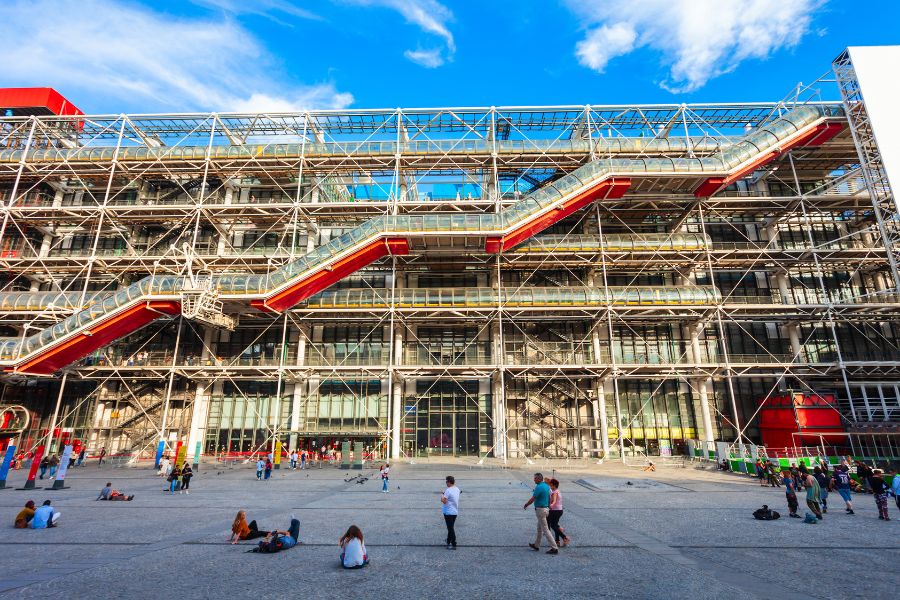
Art lovers, curious travelers, and anyone chasing the best panoramic views in Paris will find something special here. The Centre Pompidou’s unique look, buzzing exhibitions, and jaw-dropping lookout make it a must for any Paris trip.
Unpacking the Inside-Out Architecture of Centre Pompidou
Standing in front of the Centre Pompidou, you just can’t miss how much it pops out from the rest of Paris. Those colorful pipes, the exposed skeleton, and a playful attitude make it a landmark that grabs attention and, honestly, sparks a lot of debate.
The Vision Behind the Design
Back in the 1970s, Paris needed a modern art space that shattered the old mold. Renzo Piano and Richard Rogers, the architects, wanted everything—pipes, staircases, support beams—right out in the open. No hiding behind walls.
They pushed this “inside-out” idea hard. It clashed with centuries of Parisian tradition. Their goal? Show the building’s guts, make it clear how things work. When I first saw it, I thought, “Wow, this place has nothing to hide.” That honesty felt refreshing. The design kicked off a bigger shift toward high-tech architecture, but in Paris, it was almost scandalous.
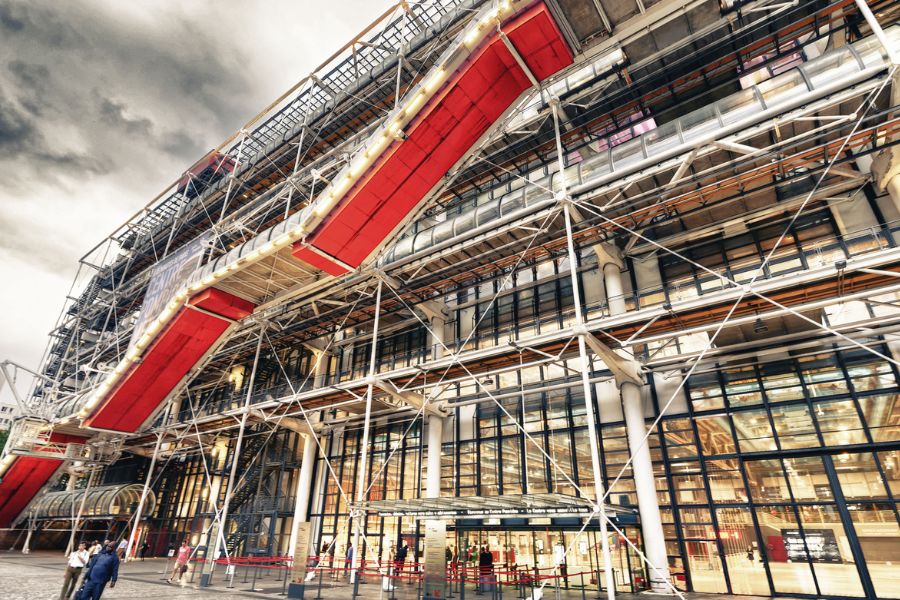
Now, the building feels like a machine and a museum all at once. Giant ducts and outdoor escalators grab your attention. For me, it’s like stepping inside a living, breathing system—definitely not just another static structure.
Colorful Pipes and Transparent Walls
I love how they color-coded everything. Those pipes aren’t just for show—they actually do something, and each color means something different:
| Color | Meaning |
|---|---|
| Blue | Air conditioning ducts |
| Green | Water pipes |
| Yellow | Electrical wires |
| Red | Escalators and elevators |
Huge glass walls let sunlight pour in and open up sweeping city views. Riding up the clear-tube escalator, I watched Paris rooftops roll out beneath me. The Centre Pompidou almost feels see-through, blending the inside with the city’s buzz. You can watch the building “breathe” and function, which is just wild—I haven’t found that anywhere else.
Comparisons to Other Paris Landmarks
Paris is packed with icons like the Eiffel Tower, Notre-Dame, and the Arc de Triomphe. Each has its own story and vibe. The Eiffel Tower feels serious and strong, while Notre-Dame oozes tradition.
But the Centre Pompidou? It leaps straight into modernity with bold colors and playful design. Walking nearby, you can’t mistake it for anything else. Some locals joke it looks like a construction site that never ends. Maybe, but to me, it’s a breath of fresh air—something unexpected in the City of Lights. Its look sparks conversations and draws in anyone craving a different side of Paris.
The Piazza and Its Vibrant Atmosphere
Right out front, there’s a huge piazza that’s always buzzing. Street performers, musicians, and artists set up shop, adding to the fun. I spent a while just people-watching, locals and tourists weaving through the crowd.
The piazza works as a meeting spot, a chill-out zone, and even an outdoor art space on some days. It’s wide, open, and super easy to get to. From here, you catch both the Pompidou’s quirky architecture and city views, including a peek at the Eiffel Tower. The vibe is relaxed but lively, perfect for soaking up some Paris energy before heading inside.

My Immersive Journey Through Modern and Contemporary Art
Once inside, I felt like I’d landed in a maze of color, creativity, and bold ideas. The art here bursts with energy and surprise, from classics to interactive displays that really pull you in.
Must-See Masterpieces and Avant-Garde Collections
As I wandered, I ran into some of Europe’s greatest modern artworks. The Pompidou’s collection is massive and gutsy—full of artists who broke the rules.
One piece that made me pause was Marcel Duchamp’s Fountain (yep, that famous urinal). I also spotted works by Piet Mondrian and Fernand Léger—their bold shapes and colors just jump out at you. Glass cases held rare early 20th-century experiments, letting visitors peek at the roots of the avant-garde.
Here’s just a taste:
| Artist | Notable Work | Style |
|---|---|---|
| Wassily Kandinsky | Composition VIII | Abstract |
| Sonia Delaunay | Prismes électriques | Orphism |
| Alexander Calder | Mobiles | Kinetic Sculpture |
Pollock, Picasso, and Beyond
I found myself in rooms filled with legends. Jackson Pollock’s wild drip paintings felt like they were in motion. Standing there, I could almost sense the energy in every splash.
Around another corner, Pablo Picasso’s bold shapes grabbed my attention. The Pompidou shows both his Cubist phase and later works, so you really get a sense of his creative journey. I also saw pieces from Joan Miró and Andy Warhol—think bright pop art and dreamy, surreal scenes.
Together, these artists create a visual timeline of modern and contemporary art. Every piece pushes you to look closer and think a little differently.
Interactive Exhibits and Video Installations
The Pompidou isn’t just about staring at paintings. Loads of rooms invite you to get hands-on, with touchscreens, sounds, and videos for a totally immersive experience. I even tried a digital art station, doodling shapes that danced across a giant screen with everyone else’s.
I slipped into a dark room where Bruce Nauman’s video installations looped weird sounds and images. People sat on the floor, quietly soaking it in. Another space paired experimental music with moving graphics—nothing like what you’d find at the Louvre.
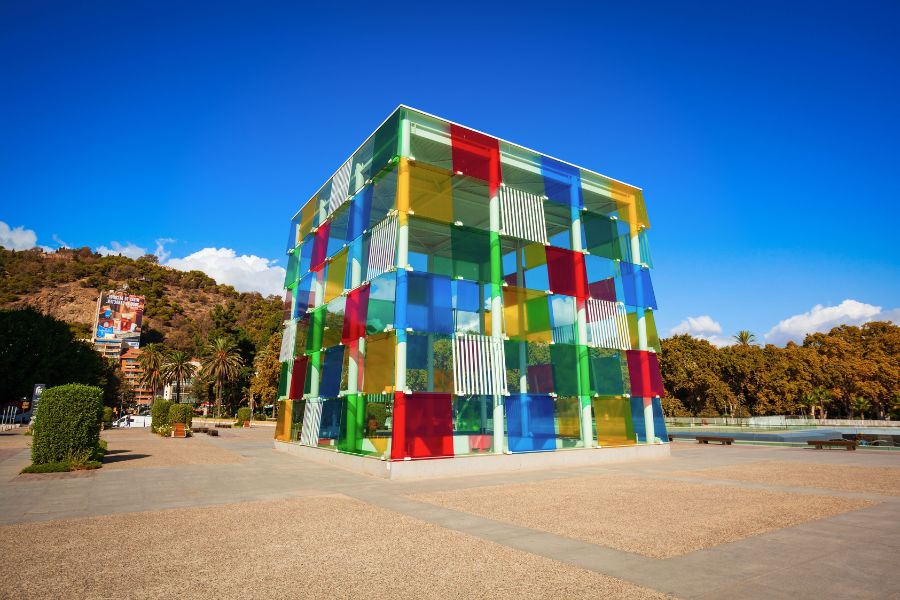
Some interactive bits I loved:
- Touch-sensitive displays where you make digital art
- Motion-activated installations that react as you move
- Rooms with surround sound and video
Comparing Modern Art at the Pompidou and the Louvre
While exploring the Pompidou, I couldn’t help but compare it to the Louvre. The Louvre is all about timeless treasures—Mona Lisa, ancient statues, formal rooms packed with tourists snapping photos.
The Pompidou flips things. Here, art from the past 120 years takes center stage. Colorful pipes, open spaces, and glass walkways set a different mood. The art breaks rules, asks questions, and even lets visitors play a part.
If you’re after classic beauty, you’ll want the Musée d’Orsay or the Louvre. But if you’re up for something bold, the Pompidou is where you’ll find creative risks and fresh ideas. I left feeling totally energized by the contrast.
Sky-High Panoramic Views: Paris Unfolds Around the Pompidou
At the top of the Centre Pompidou, Paris looks brand new. Sweeping views let every famous landmark pop out, and honestly, it’s a whole different way to see the City of Lights.
Ascending the External Escalators
Riding the Pompidou’s outdoor escalators is half the fun. These clear tubes cling to the building, making you feel like you’re floating over Paris as you climb.
Each landing reveals a little more of the city. The higher you go, the bigger the view. Sunlight pours in, and you can hear Paris humming below.
The transparent design turns the ride into an experience. Kids press up against the glass, adults snap rooftop photos, and everyone gets a sneak peek of what’s waiting at the top. Every level shows off a new angle.
Tip: Don’t rush. Pause at each landing and grab a few snapshots as the skyline shifts.
Spotting the Eiffel Tower, Montmartre, and More
Up on the rooftop terrace, Paris spreads out like a living postcard. The Eiffel Tower stands proud in the distance, easy to spot even on a gray day. To the north, Sacré-Cœur and Montmartre pop up over the rooftops.
I spun in a slow circle, picking out the Montparnasse Tower to the south and the Champs-Élysées slicing across the city. The golden dome of Les Invalides sparkled in the sun. Off to the west, Trocadéro’s sweeping steps peeked through.
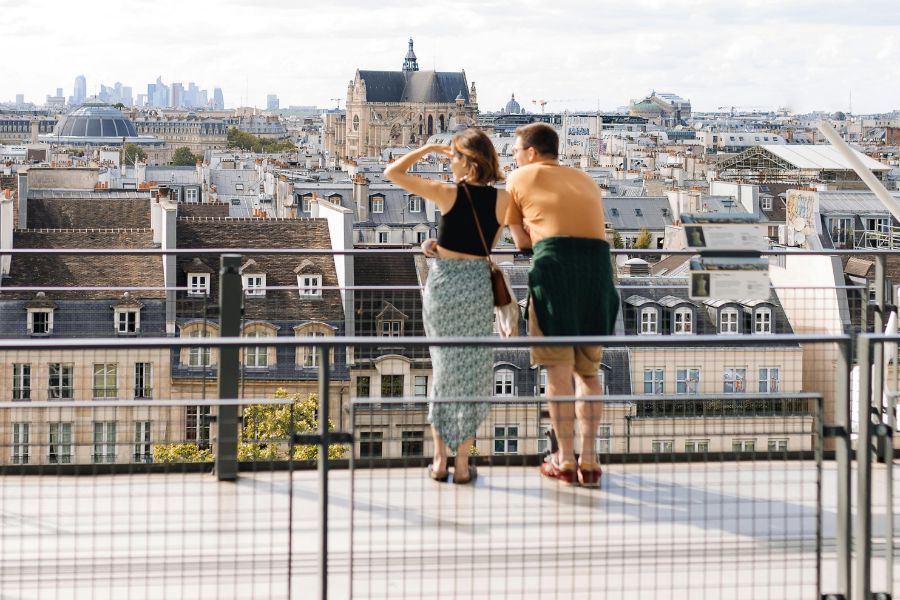
Here’s what I spotted from up top:
| Landmark | Direction from Pompidou | What Stands Out |
|---|---|---|
| Eiffel Tower | Southwest | Iconic Iron Structure |
| Montmartre | North | White Sacré-Cœur Dome |
| Montparnasse Tower | South | Modern Skyscraper |
| Champs-Élysées | West-Northwest | Broad Avenue |
| Les Invalides Dome | Southwest | Golden Dome |
| Trocadéro | West | Classic Steps |
Best Times and Tips for Iconic Photos
To get the best view (and the best photos), timing matters. Early mornings have that soft, golden light and fewer crowds, so you can snag a spot by the glass. Late afternoon is my personal favorite—the sun sets, and the city glows.
If you’re after great shots, here’s what helps: wipe your lens, lean up to the glass to dodge glares, and use the building’s lines to frame the Eiffel Tower or Montmartre.
Pro tip: Sunset is gorgeous but can get packed. Show up 30 minutes early for a good spot. For skyline photos, hope for clear weather—the City of Lights really shines when the sky’s bright.
Insider Tips for Visiting Centre Pompidou Like a Local
To make the most of your Centre Pompidou trip, a bit of planning goes a long way. I’ve picked up tips—like which metro to take, handy apps, where to eat nearby, choosing tickets, and finding pop-up events—that can turn a good visit into a great one.
How to Get There: Metro, Citymapper, and Public Transit
The Centre Pompidou sits in the 4th arrondissement, close to both Hôtel de Ville and Rambuteau metro stations.
I usually hop on Metro Line 11 (Rambuteau) since it’s the shortest walk to the entrance. Hôtel de Ville (Lines 1 and 11) works just as well, especially if you’re up for a quick stroll through some lively Parisian streets.
For getting around, I honestly rely on the Citymapper app. It’s got real-time transit info and helps me find the fastest, least crowded route.
Public buses work, but honestly, I trust the metro more. Keep a few euros handy for tickets, or grab a rechargeable Navigo card if you’re staying in Paris for more than a couple of days.
Biking there with Paris’s Vélib’ rental system is tempting, but parking near Pompidou is a hassle. I never bother driving—traffic’s a headache and parking garages cost a fortune.
The metro wins every time for me.
Timed Tickets and the Paris Museum Pass
Waiting in lines? No thanks. Centre Pompidou draws big crowds, especially on weekends.
I always book a timed ticket online before heading over. It guarantees my spot and lets me skip standing outside, rain or shine.
The Paris Museum Pass is a real lifesaver for art fans. With it, I walk right past ticket lines at Pompidou and dozens of other museums.
If you’re planning to hit the Louvre or Musée d’Orsay too, it’s totally worth it. For just one visit, timed tickets usually cost less—just pick a slot that fits your plans.

I keep my tickets on my phone, which makes things easy. Aim to arrive about 10 minutes before your time slot.
If you’re late, you’ll probably have to wait, especially during school breaks or special exhibitions.
Guided Tours and Special Events
Exploring Centre Pompidou with a guide makes a huge difference. I once joined a themed tour in English and learned so much about the architecture and art collections.
These tours run several times a week, and the guides always share stories you’d miss wandering solo.
Special events—like artist talks or hands-on workshops—pop up on the museum’s website. I always check ahead, just in case there’s a rooftop concert or pop-up installation on.
Weekends bring family-friendly activities, which is perfect if you’re visiting with kids.
Guided tours fill up quickly, so I always book ahead. If I’m in the mood to wander, I grab an audio guide—they’re available in several languages.
Best Eats, Nearby Cafés, and Street Performers
After hours of exploring, I’m always hungry. The Centre Pompidou’s rooftop Restaurant Georges serves up amazing Paris skyline views.
It’s not cheap, so sometimes I just grab coffee and pastries at the museum café downstairs.
If I want something more relaxed, I wander around Rue Rambuteau. The bakeries and sandwich shops there are fantastic.
I’ll often grab a fresh baguette or falafel and snag a bench at Place Igor Stravinsky, right next door. Street performers light up the square most afternoons—think jazz musicians, mimes, and sometimes even fire jugglers.
For a longer meal, Café Beaubourg across the street is a classic spot for brasserie food and people-watching.
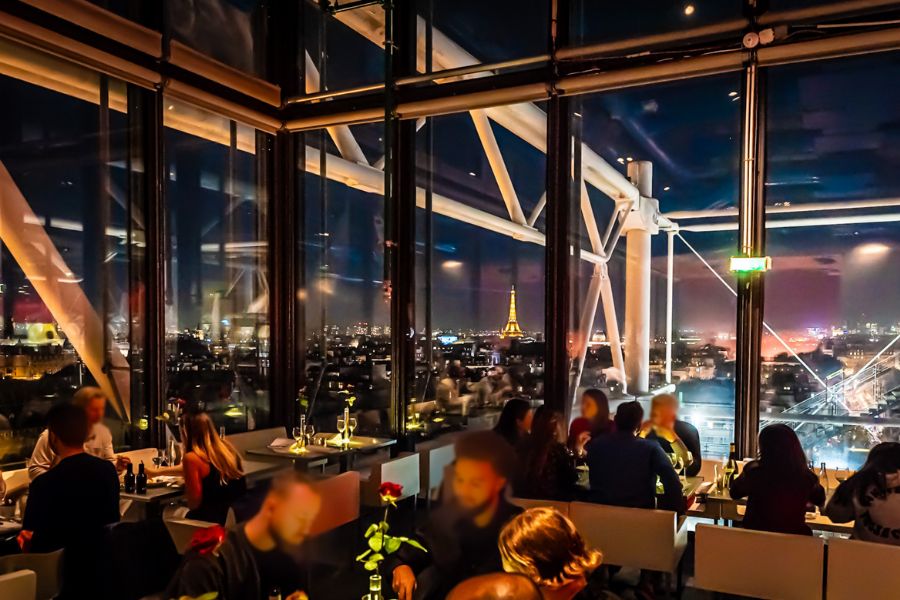
I love early evenings here—the area buzzes, and the fountain art comes alive in the fading light.
Exploring the Beating Heart of Paris: What’s Nearby the Pompidou
There’s so much more to the Centre Pompidou than just modern art and funky pipes.
When I step outside, Paris’s historic wonders, world-class museums, and lively neighborhoods are all just a short walk away.
Strolling to Notre Dame and Sainte-Chapelle
From the Pompidou, I can walk to the Seine and see Notre Dame’s towers in under fifteen minutes.
Even after the fire, the cathedral’s exterior still looks majestic. Strolling along the river, I spot artists sketching, booksellers with vintage prints, and crowds soaking up old Paris.
A bit farther along the same island, I duck into Sainte-Chapelle. The stained glass there is just unreal—walls of pure light and color.
Standing in the middle, I watch sunlight turn the chapel into a kaleidoscope of reds and blues. Both places let me step right into Paris’s medieval past, just steps from the Pompidou’s modern lines.
Art Lover’s Triangle: Louvre, Musée d’Orsay, and Pompidou
The Pompidou anchors what I like to call the “art lover’s triangle”—three museums that changed how I see art.
The Louvre is about a 20-minute walk away, winding through old streets and along the river. I ride the glass pyramid escalators and lose myself among ancient statues, Renaissance paintings, and—of course—the Mona Lisa.
Across the Seine, the Musée d’Orsay calls with its Impressionist masterpieces. The old train station building now bursts with the light brushstrokes of Monet, Van Gogh, and Degas.
It’s easy to connect all three in one day: start modern and bold at Pompidou, then cross town for a tour through art history.
Shopping and Fashion at Galeries Lafayette
After soaking up art, I sometimes switch gears and dive into Parisian shopping.
Galeries Lafayette is more than a department store—it’s a fashion palace with a stained-glass dome that’s a work of art itself.
I wander through luxury labels, catch glimpses of the latest trends, or just head up to the rooftop for some of the best city views.
Even if I’m not shopping, the energy inside is contagious. Perfume counters, gourmet food halls, and people from all over the world—it’s a scene.
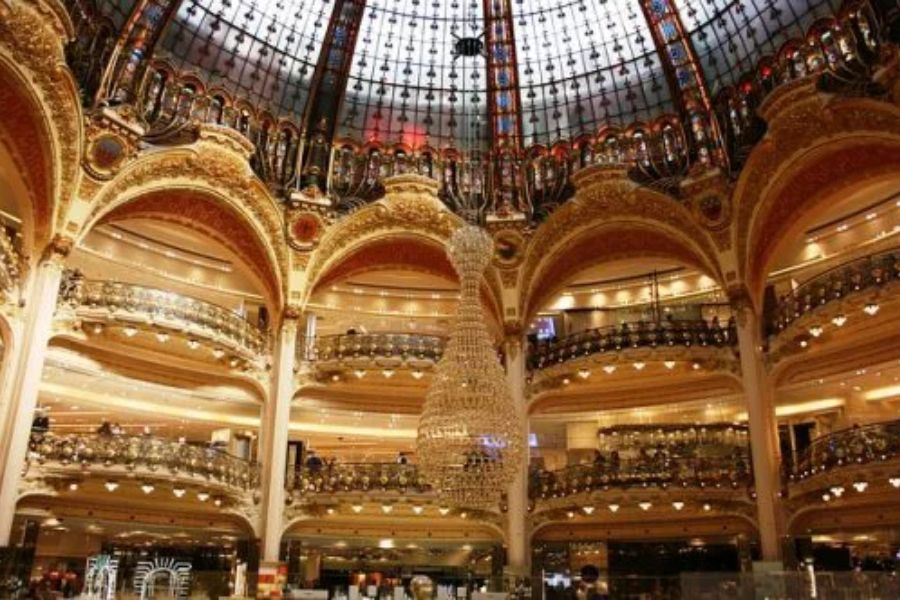
It’s just a short Metro ride from the Pompidou, and it’s a great way to experience a glitzy slice of Paris fashion.
Neighborhood Gems: Le Marais, Place de la Concorde, and More
The Le Marais district sits right next to the Pompidou, and I love getting lost there.
Narrow cobbled lanes open up to hidden courtyards, cool cafés, and some of the city’s trendiest boutiques.
You’ll find vintage stores, falafel stands, and art galleries tucked everywhere.
A bit farther west, Place de la Concorde spreads out as a huge open square packed with Paris history. The fountains, Egyptian obelisk, and sweeping views toward the Tuileries Garden make for a classic stroll.
If I walk through the garden, I end up at the gates of the Louvre. Or, if I’m feeling ambitious, I keep going to the Panthéon for more French history and a killer view of the Latin Quarter.
Here’s a quick look at what’s nearby:
| Site | Walking Distance from Pompidou | Highlights |
|---|---|---|
| Notre Dame | ~15 minutes | Gothic architecture, river views |
| Sainte-Chapelle | ~18 minutes | Colorful stained glass windows |
| Louvre | ~20 minutes | World’s largest art museum |
| Musée d’Orsay | ~30 minutes | Impressionist masterpieces |
| Galeries Lafayette | ~20 minutes (by Metro) | Shopping, fashion, rooftop views |
| Le Marais | 5 minutes | Food, boutiques, lively streets |
| Place de la Concorde/Tuileries | ~25 minutes | History, gardens, iconic Paris |
| Panthéon | ~30 minutes | Tombs, city views, historic site |
Epic Parisian Adventures Inspired by the Centre Pompidou
Paris has this way of turning every day into a bit of an adventure.
After exploring the Pompidou’s bold halls, I always find the city tempting me with more—quiet riverside walks, quirky day trips, and even some underground mysteries.
Seine River Cruises and Riverside Strolls
Nothing beats a Seine cruise at sunset. I boarded one of those glass-topped boats, and suddenly the city’s famous bridges—Pont Alexandre III, Pont Neuf—came alive.
The Eiffel Tower sparkled on one side, while Notre-Dame stood watch on the other.
Seine cruises usually include commentary, which helps me catch little details I’d otherwise miss. I really recommend the evening ones if you’re into city lights.
After getting off near Les Invalides, I wandered along the riverbank. It felt peaceful after the Pompidou’s energy.
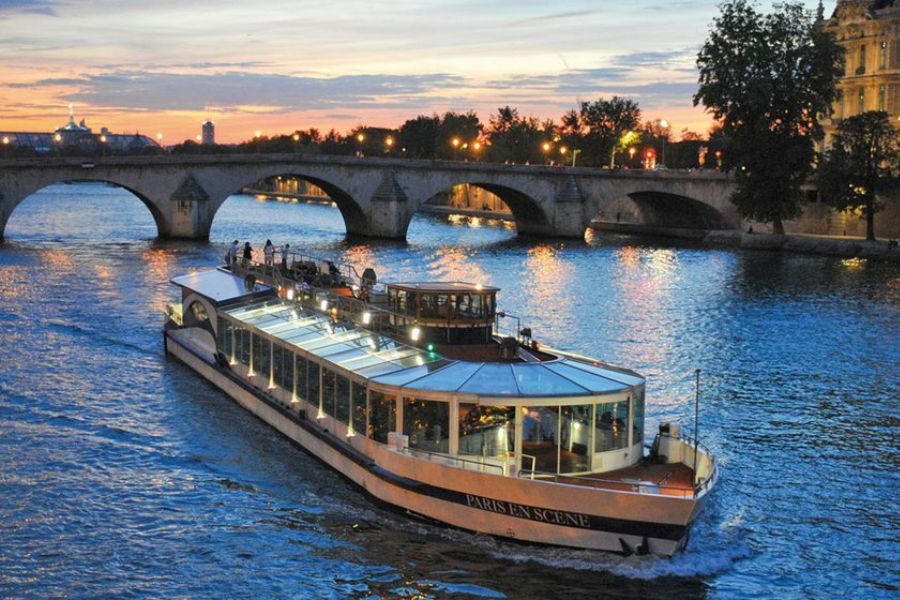
Families picnicked, artists painted, and I watched boats drift by. For me, this classic Paris experience always gives a fresh perspective on the city.
Climbing the Sacred Steps of Sacré-Cœur
Montmartre’s hill is steep, but climbing up to Sacré-Cœur is so worth it.
I usually start at the base of the stairs, joining a parade of travelers and locals making their way up. Street performers and artists keep the mood lively.
At the top, the Sacré-Cœur Basilica gleams in the sunlight, its white domes shining bright.
The view is just breathtaking—I can see all of Paris spread out below. Inside, the mosaic ceilings and golden details always make me pause.
The steps outside are the perfect spot to relax. I’ll sit there with a baguette, taking in Montmartre’s buzz and the city below.
Day Trips: Palace of Versailles and Disneyland Paris
Sometimes Paris makes me want to explore a little farther. Two of the best day trips? The Palace of Versailles and Disneyland Paris—totally different, but both unforgettable.
Versailles is a feast of royal history. The Hall of Mirrors blew me away, and the gardens stretch on forever.
I wandered tree-lined paths, spotting fountains and sculptures at every turn.
Switching things up, I spent a day at Disneyland Paris. Even as a grown-up, the parades, themed rides, and that magical castle gave me a real sense of excitement.
It’s easy to get there by train, and it’s perfect for families or anyone who wants a break from the city.
Unusual Detours: Catacombs, Hot Air Balloon, and Foucault’s Pendulum
Paris hides some seriously intriguing experiences, both below and above the surface.
I kicked things off with the Catacombs. Picture a labyrinth packed with neatly stacked bones—creepy, sure, but it’s a walk through history you won’t forget.
These underground tunnels go on for miles. You get a whole new look at the city’s past down there.
Craving something a little lighter, I made my way to Parc André Citroën for a hot air balloon ride. Floating over Paris felt peaceful and surreal.

The views from up there? Honestly, they might beat even the Centre Pompidou’s rooftop.
Then I wandered over to Saint-Sulpice to see the famous Foucault’s Pendulum. This giant swinging pendulum actually demonstrates Earth’s rotation.
Science and art meet in the hush of the church, and it’s oddly mesmerizing.
| Location | Experience Type | Notable Highlights |
|---|---|---|
| Seine River | Cruise, Stroll | Eiffel Tower, Les Invalides |
| Montmartre/Sacré-Cœur | Climbing, Sightseeing | Basilica, Panoramic views |
| Versailles | Day Trip, History | Hall of Mirrors, Gardens |
| Disneyland Paris | Day Trip, Entertainment | Rides, Castle, Parades |
| Catacombs | Underground Tour | Tunnels of bones |
| André Citroën Park | Hot Air Balloon | Aerial city views |
| Saint-Sulpice | Science, Culture | Foucault’s Pendulum |

